Introduction
Bronchiectasis is an abnormal, chronic enlargement of the bronchi, the passageways from the trachea to the alveoli that are the air-exchanging parts of the lungs. Bronchiectasis generally occurs as a result of infection, although noninfectious factors may contribute to the development of this condition. Accompanying the enlargement of the bronchi is their decreased ability to clear secretions.
Structure of Affected bronchus
Difference between normal Bronchi and Bronchiectasis
Failure to clear secretions allows microbes and particles to collect in them, which leads to more secretions and inflammation that further damage the airways, causing more dilation in a vicious cycle.
Vicious cycle hypothesis
Bronchiectasis may occur in a single portion of the lung (localized) or throughout the lungs (diffuse) and is the major lung abnormality of cystic fibrosis.
Types of Bronchiectasis
Cylindrical bronchiectasis:
- Bronchi enlarged and cylindrical in shape
- Normal tapering of airway as it traverses to the periphery is not present
- Distal airways end abruptly, owing to mucus plugging
- Fewer generations of bronchi than normal
- Parallel tram-track lines are seen on CXR or CT scan
- CT cross-section views reveal ‘signet ring’ appearance of the dilated bronchus and its accompanying vessel.
Types of bronchiectasis
Varicose bronchiectasis:
- Irregular bronchi, with alternating dilation and constriction
- Shows further distortion of the airway wall along with more mucous and sputum production by the individual
- Bronchographic pattern resembles varicose veins.
- Some of the bronchi may appear to be in a beaded form.
Saccular or cystic bronchiectasis:
- Most severe form
- Commonly found in cystic fibrosis patients
- Bronchi are dilated, forming a cluster of round air-filled or fluid-filled cysts
- Only 25% of the normal number of bronchial subdivisions
- Degree of bronchial dilation increases proximal to distal
- Bronchial tree ends in blind sacs.
History
Bronchiectasis comes from the Greek words “bronckos” (airway) and “ektasis” (widening). René Laennec, the man who invented the stethoscope, used his invention to first discover bronchiectasis in 1819. The disease was researched in greater detail by Sir William Osler in the late 1800s; it is suspected that Osler actually died of complications from undiagnosed bronchiectasis.
Epidemiology and Prevalence
Bronchiectasis can occur at any age, but is more common in older adults. It is more common in women than men, although it is not known why. The number of people living with bronchiectasis is increasing:
- For every 1,000 people in the UK, between 2 and 3 have bronchiectasis. That means that between 12,000 to 18,000 people in Scotland are currently living with bronchiectasis.
- About 3 out of every 10,000 people in the UK are newly diagnosed with bronchiectasis each year. That means that about 1,800 people each year in Scotland receive a diagnosis of bronchiectasis.
- Bronchiectasis is responsible for 1.4% of deaths from lung disease. This is much lower than deaths from lung cancer (31%), chronic obstructive pulmonary disease (26%) or pneumonia (25%).
Root causes of Bronchiectasis
Bronchiectasis is caused by inflammatory damage to the airways. In about half of all people with bronchiectasis the cause of the damage cannot be found. In the other half an identified underlying cause has damaged the airways, leading to bronchiectasis. Examples of underlying causes include:
- A severe lung infection such as pneumonia, tuberculosis or whooping cough, often in childhood or as a young adult – this is the most common cause
- Chronic obstructive pulmonary disease (COPD) with frequent flare-ups
- An obstruction or blockage of the airway – an inhaled object (such as a peanut) or a tumour can cause damage to the airway
- Acid from the stomach (acid reflux) which travels back up towards the mouth and is breathed in to the lungs
- Conditions which affect the immune system can make a person more susceptible to infection and subsequent damage
- Conditions that cause inflammation in other parts of the body (such as rheumatoid arthritis, ulcerative colitis or Crohn’s disease) can also cause inflammation in the lungs
- Some inherited conditions such as cystic fibrosis
- Ciliary defects such as primary ciliary dyskinesia or yellow nail syndrome (rare)
- An allergic reaction to a fungus called aspergillus. This is often seen in people who also have asthma
- Smoking is not thought to be a direct cause of bronchiectasis but stopping smoking is important to prevent further damage to the airways.
- HIV infection
Risk factors
Strong factors
- Cystic fibrosis
- Host immunodeficiency
- Previous infections
- Congenital disorders of the bronchial airways
- Primary ciliary dyskinesia
Weak factors
- Alpha-1 antitrypsin deficiency
- Connective tissue disease
- Inflammatory bowel disease
- Aspiration or inhalation injury
- Focal bronchial obstruction
- Tall, thin, white females, age 60 or over
What are the symptoms of Bronchiectasis?
The main symptoms of bronchiectasis are coughing up sputum (phlegm) and repeated chest infections. The severity of symptoms varies depending on the severity of the disease:
- Mild disease: occasional cough producing small amounts of sputum and infrequent chest infections (less than 2 per year). Sputum is usually clear or light in color.
- Severe disease: coughing up large amounts of sputum on most days and frequent chest infections. Sputum is usually dark yellow, green or brown and bacteria are found in the sputum even when the person is well.
- Most people with bronchiectasis have symptoms somewhere in between.
Other symptoms include:
- Tiredness
- Breathlessness, especially on physical exertion or exercising
- Wheezing
- Coughing up blood (usually just in small amounts, but sometimes a larger amount can be coughed up)
- Joint pain and chest pain
Complications of Bronchiectasis includes
- Bleeding from a damaged airway – this is usually just a small amount, but (very rarely) can be life-threatening
- Pneumothorax or ‘collapsed lung’
- Heart failure (when your heart does not pump blood around your body as well as it should)
- Anxiety and low mood
- Self-consciousness, urinary incontinence, and / or sexual problems caused by chronic cough
- Chronic tiredness
- Poor appetite and weight loss
- Respiratory failure (when your lungs aren’t able to exchange oxygen and carbon dioxide properly)
How is Bronchiectasis diagnosed?
Your doctor will listen to your lungs to check for any abnormal sounds or evidence of airway blockage. You’ll likely need a complete blood test to look for infection and anemia. Other tests may include:
- Sputum test to check your mucus for microorganisms such as viruses, fungus, or bacteria
- Chest X-ray or CT scan to provide images of your lungs
- Pulmonary function tests to find out how well air is flowing into your lungs
- QuantiFERON blood test or purified protein derivative (PPD) skin test to check for tuberculosis
- Sweat test to screen for CF
How Is Bronchiectasis treated?
Bronchiectasis often is treated with medicines, hydration, and chest physical therapy (CPT). Your doctor may recommend surgery if the bronchiectasis is isolated to a section of lung or you have a lot of bleeding. If the bronchiectasis is widespread and causing respiratory failure, your doctor may recommend oxygen therapy.
The goals of treatment are to:
- Treat any underlying conditions and lung infections.
- Remove mucus (a slimy substance) from your lungs. Maintaining good hydration helps with mucus removal.
- Prevent complications.
Early diagnosis and treatment of the underlying cause of bronchiectasis may help prevent further lung damage. In addition, any disease associated with the bronchiectasis, such as cystic fibrosis or immunodeficiency, also should be treated.
Medicines
Your doctor may prescribe antibiotics, bronchodilators, expectorants, or mucus-thinning medicines to treat bronchiectasis.
Antibiotics
Antibiotics are the main treatment for the repeated lung infections that bronchiectasis causes. Oral antibiotics often are used to treat these infections. For hard-to-treat infections, your doctor may prescribe intravenous (IV) antibiotics. These medicines are given through an IV line inserted into your arm.
Salt water (called hypertonic saline). This aims to make your mucus thinner.You breathe it in through a mask using a machine called a nebuliser.
Expectorants and Mucus-Thinning Medicines
Expectorants help loosen the mucus in your lungs. They often are combined with decongestants, which may provide extra relief. Mucus thinners, such as acetylcysteine, loosen the mucus to make it easier to cough up.For some of these treatments, little information is available to show how well they work.
Hydration
Drinking plenty of fluid, especially water, helps prevent airway mucus from becoming thick and sticky. Good hydration helps keep airway mucus moist and slippery, which makes it easier to cough up.
Chest Physical Therapy
CPT also is called physiotherapy or chest clapping or percussion. This is an airway clearance technique generally performed by a respiratory therapist but can be done by a trained member of the family. It involves the therapist pounding your chest and back over and over with his or her hands or a device. Doing this helps loosen the mucus from your lungs so you can cough it up.
Postural drainage: You can sit with your head tilted down or lie on your stomach with your head down while you do CPT. Gravity and force help drain the mucus from your lungs.
Positional drainage technique examples
Some people find CPT hard or uncomfortable to do. Several devices can help with CPT, such as:
- An electric chest clapper, known as a mechanical percussor.
- An inflatable therapy vest that uses high-frequency air waves to force mucus toward your upper airways so you can cough it up.
- A small handheld device that you breathe out through. It causes vibrations that dislodge the mucus.
- A mask that creates vibrations to help break loose mucus from your airway walls.
Other Treatments
Depending on your condition, your doctor also may recommend bronchodilators, inhaled corticosteroids, oxygen therapy, or surgery.
Bronchodilators
Bronchodilators relax the muscles around your airways. This helps open your airways and makes breathing easier. Most bronchodilators are inhaled medicines. You will use an inhaler or a nebulizer to breathe in a fine mist of medicine. Inhaled bronchodilators work quickly because the medicine goes straight to your lungs. Your doctor may recommend that you use a bronchodilator right before you do CPT.
Inhaled Corticosteroids
If you also have wheezing or asthma with your bronchiectasis, your doctor may prescribe inhaled corticosteroids (used to treat inflammation in the airways).
Oxygen Therapy
Oxygen therapy can help raise low blood oxygen levels. For this treatment, you’ll receive oxygen through nasal prongs or a mask. Oxygen therapy can be done at home, in a hospital, or in another health facility.
Surgery
Your doctor may recommend surgery if no other treatments have helped and only one part of your airway is affected. If you have major bleeding in your airway, your doctor may recommend surgery to remove part of your airway or a procedure to control the bleeding. In very rare instances of severe bronchiectasis, your doctor may recommend that you receive a lung transplant replacing your diseased lungs with a healthy set of lungs.
How can Bronchiectasis be prevented?
- To prevent bronchiectasis, it’s important to prevent the lung infections and lung damage that can cause it.
- Childhood vaccines for measles and whooping cough prevent infections related to these illnesses. These vaccines also reduce complications from these infections, such as bronchiectasis.
- Avoiding toxic fumes, gases, smoke, and other harmful substances also can help protect your lungs.
- Proper treatment of lung infections in children also may help preserve lung function and prevent lung damage that can lead to bronchiectasis.
- Stay alert to keep children (and adults) from inhaling small objects (such as pieces of toys and food that might stick in a small airway). If you think you, your child, or someone else has inhaled a small object, seek prompt medical care.
- In some cases, treating the underlying cause of bronchiectasis can slow or prevent its progression.
Following a healthy lifestyle is important for overall health and well-being. For example, if you smoke, try to quit. Smoking harms nearly every organ in your body, including your lungs.
Talk with your doctor about programs and products that can help you quit smoking. Also, try to avoid secondhand smoke.
Healthy lifestyle
- A healthy lifestyle also involves following a healthy diet. A healthy diet includes a variety of vegetables and fruits. It also includes whole grains, fat-free or low-fat dairy products, and protein foods, such as lean meats, poultry without skin, seafood, processed soy products, nuts, seeds, beans, and peas.
- A healthy diet is low in sodium (salt), added sugars, solid fats, and refined grains. Solid fats are saturated fat and trans fatty acids. Refined grains come from processing whole grains, which results in a loss of nutrients (such as dietary fiber).
- Staying hydrated also is important. Drinking plenty of fluids, especially water, helps prevent airway mucus from becoming thick and sticky.
- Try to be as physically active as you can. Physical activity, such as walking and swimming, can help loosen mucus. Ask your doctor what types and amounts of activity are safe for you.
 Diseases Treatments Dictionary This is complete solution to read all diseases treatments Which covers Prevention, Causes, Symptoms, Medical Terms, Drugs, Prescription, Natural Remedies with cures and Treatments. Most of the common diseases were listed in names, split with categories.
Diseases Treatments Dictionary This is complete solution to read all diseases treatments Which covers Prevention, Causes, Symptoms, Medical Terms, Drugs, Prescription, Natural Remedies with cures and Treatments. Most of the common diseases were listed in names, split with categories.
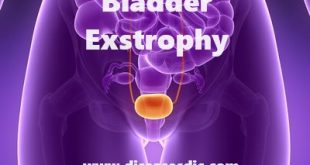
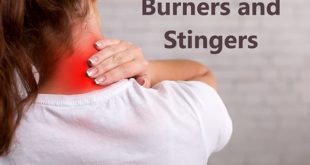

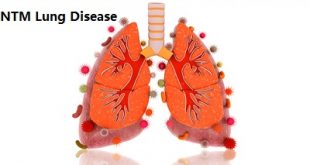
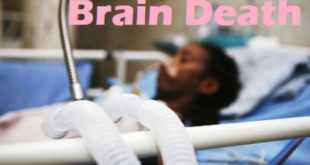
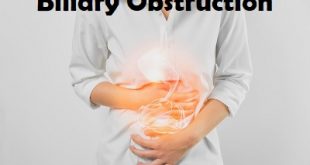

I think for this condition i advise the patient Aldo to avoid taking ice cold drink but rather warm water which helps to melt off the mucus so as to drain it outwards
what treamen sarcoidosis
Prednisone, a type of steroid, is the main treatment for sarcoidosis. This medicine reduces inflammation. In most people, prednisone relieves symptoms within a couple of months.
Other medicines, besides prednisone, also are used to treat sarcoidosis. Examples include:
Hydroxychloroquine or chloroquine (known as antimalarial medicines). These medicines work best for treating sarcoidosis that affects the skin or brain. Your doctor also may prescribe an antimalarial if you have a high level of calcium in your blood due to sarcoidosis.
Medicines that suppress the immune system, such as methotrexate, azathioprine, or leflunomide. These medicines work best for treating sarcoidosis that affects your lungs, eyes, skin, or joints.
I remember when child, i was prescribed a medecine (Ventoline) that i was supposed to inhale every time i feel bronchitis. But one day my father told me to not inhale it at the very moment i feel dificulty in breathing. He said that by doing that i could become addicted to it and the disease will grow.
I followed his advice and tried to avoid the ventoline as long as i could withstand.
Today as i am writing this, i am no more suffering except when got flu.
Is there any asthma tablet apart from salbutamol or asthmanol F,I took them for a very long time it seem is not working with my system anymore pls help.
Please consult with a good asthma specialist.
sir iam severe cystic bronchiectasis patient ni so help and give me treatment of this disease
Please consult a doctor to get better treatment.
sir I am a bronchitis patients which medicine I take plz tell me sir
Please consult a doctor.
Plzz add some medicine name an dose ddruge I think full treatment add in t
his app very nassesry Thanks
I want show my all report by doctors …
sir
suffering from lung fibrosis.
ild
sleep problem
chest congestion
breathing problem
anxiety .disorder.
at present
pump allopathic medicine.
budomat.
trivo pump inhealer
sleep disease.
taking sleep tablet.
ativan 1 mg.
pl advice.
Please consult a doctor ASAP.
Am a health consultant or homeopathy specialist you can contact me for help
I am not sure of the cause of COPD emphysema in my case. I smoked pack a day for 12 or 13 years, but quit 40 years ago. I have been an outdoor person all my adult life. Coughing started last summer producing thick mucus, greenish tint to clear. I tried prednisone and antibiotics, but no change. X-rays are negative, heart lungs and blood and serum chemistries all are normal. I have lung calcification from childhood bout with histoplasmosis. I am 75 years old and retired.My current doctor directed me to totalcureherbsfoundation .c om which I purchase the COPD herbal remedies from them ,they are located in Johannesburg, the herbal treatment has effectively reduce all my symptoms totally, am waiting to complete the 15 weeks usage because they guaranteed me total cure.